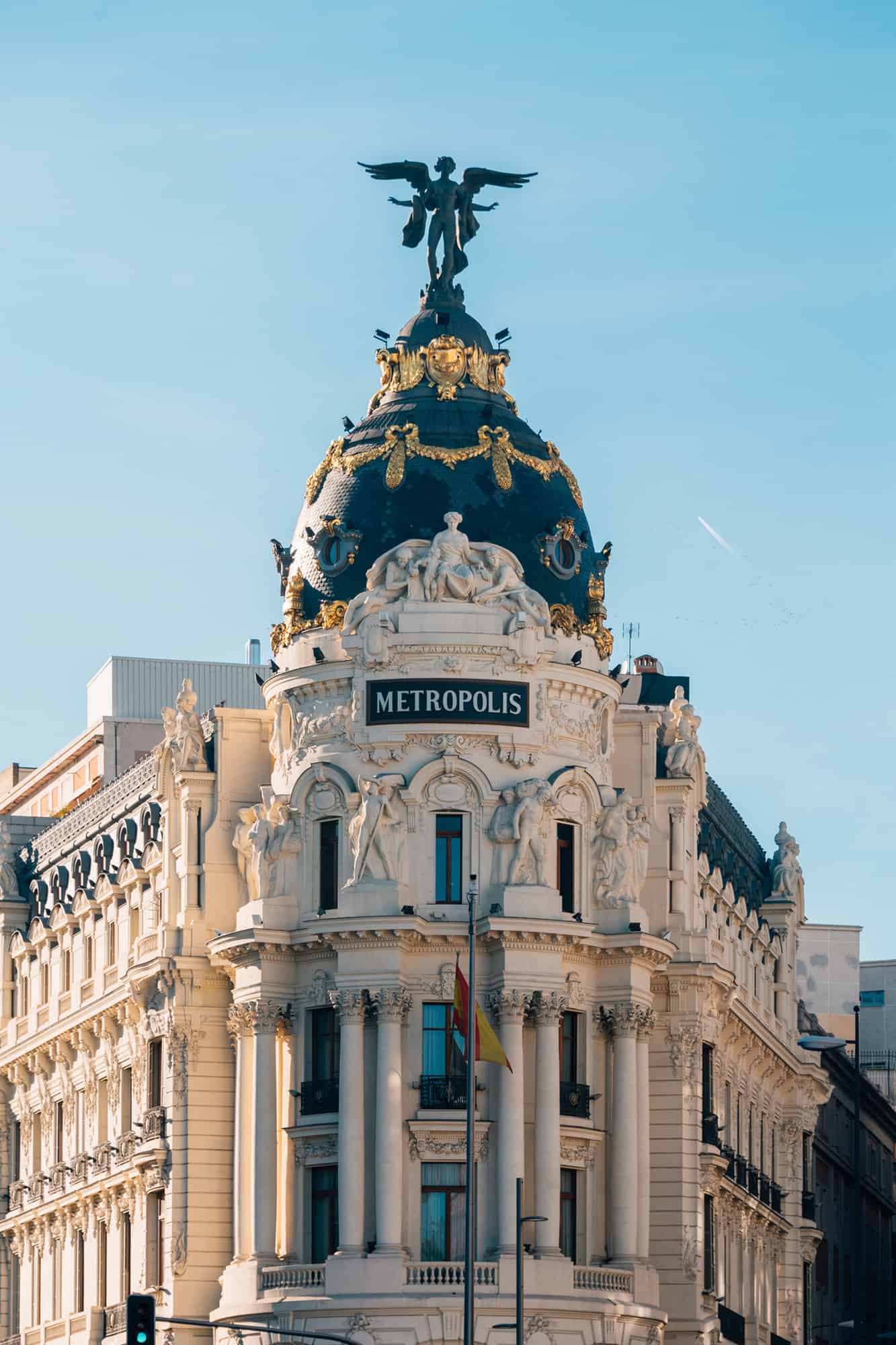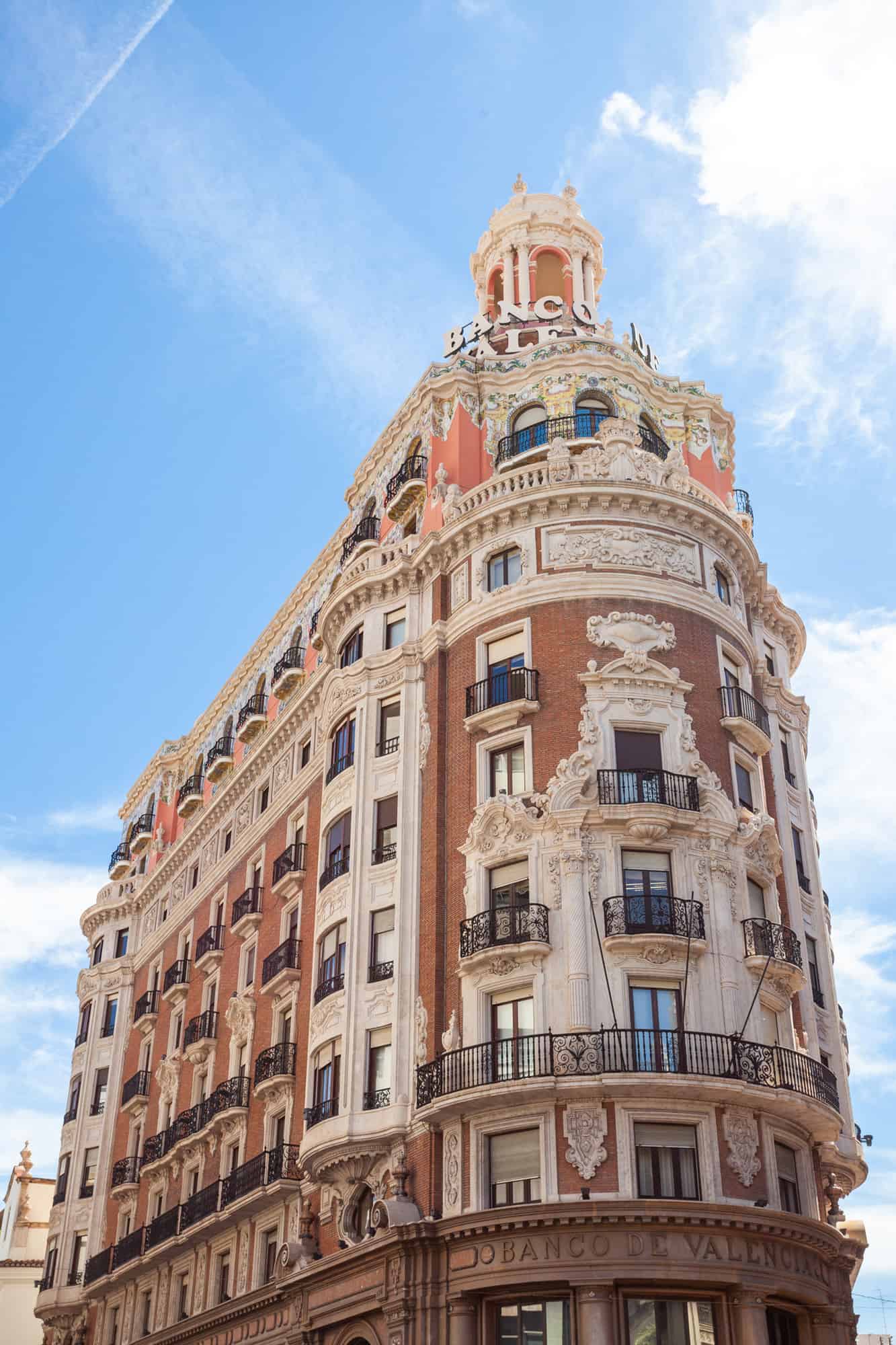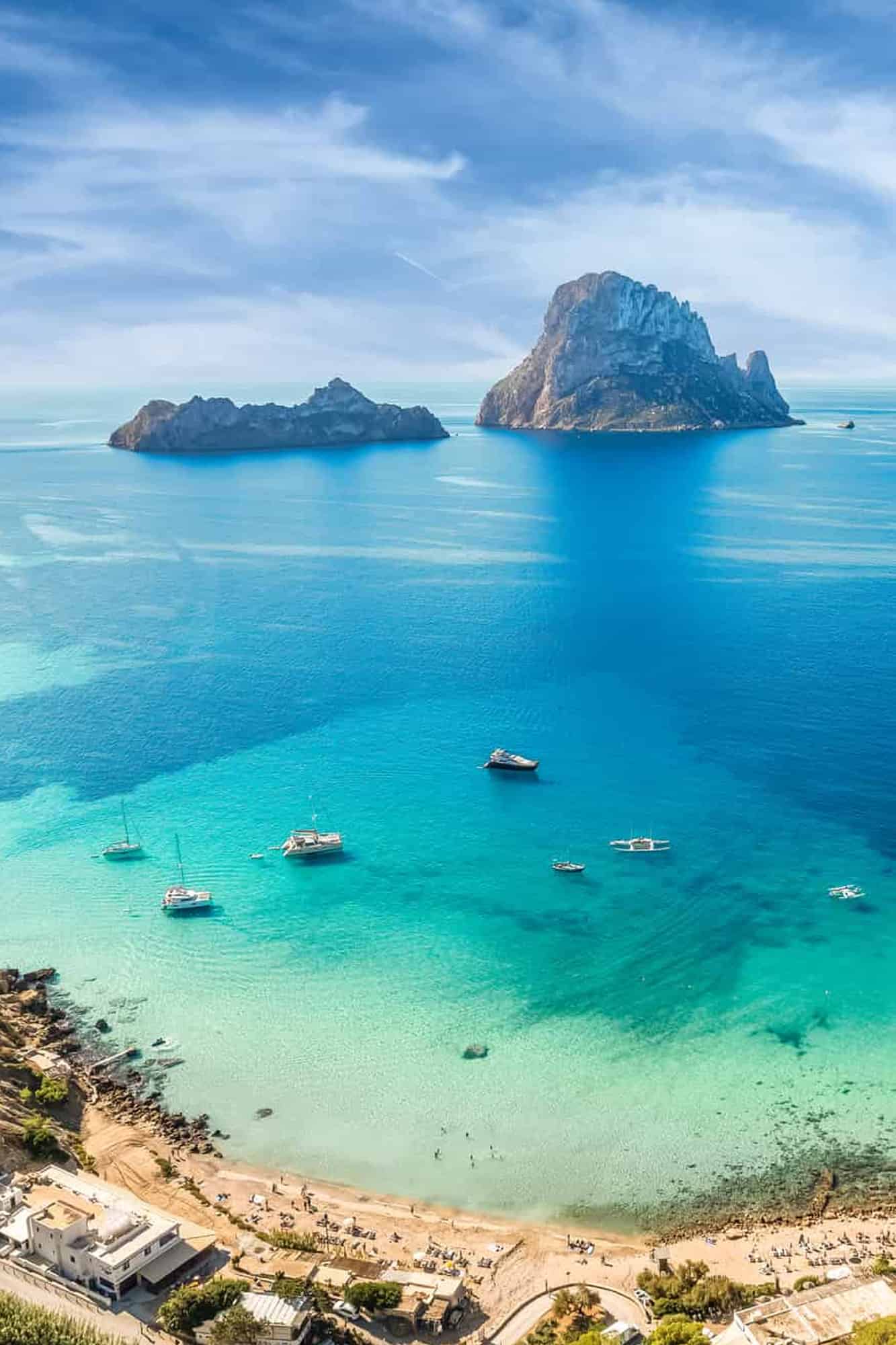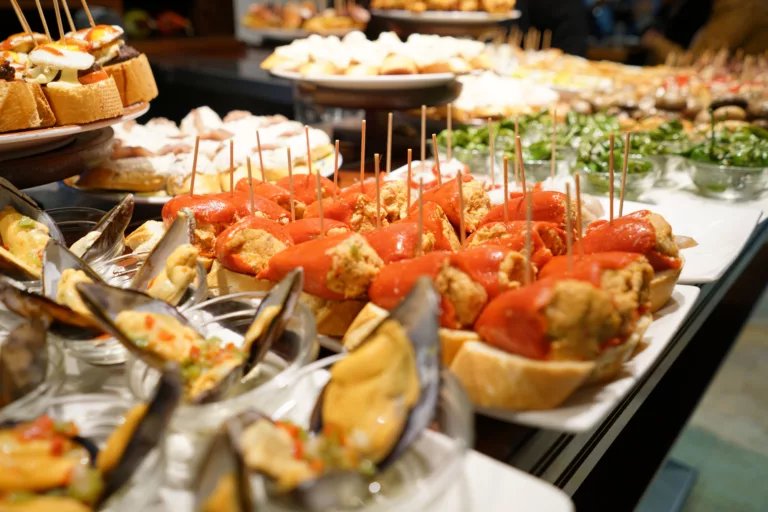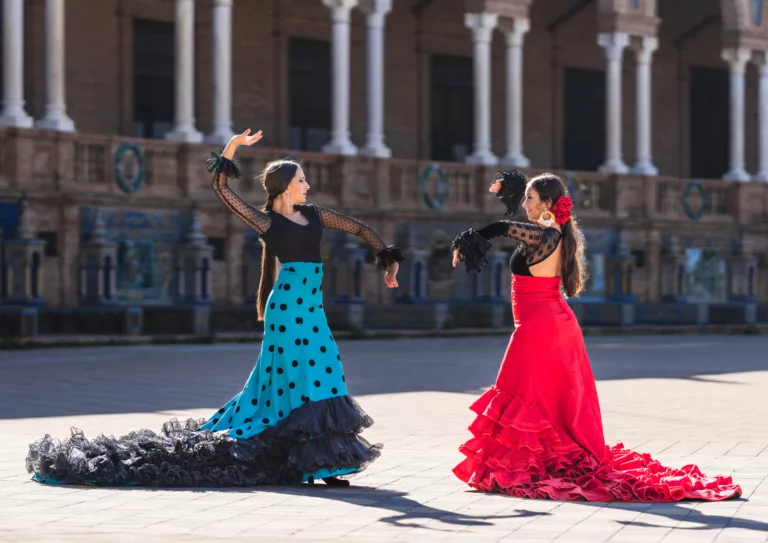11 Unique Ways to Order Coffee in Spain
Have a sip of Spain’s coffee culture with us! From Pedro Antonio’s Middle East bean adventure to today’s bustling city cafes and countryside spots, Spain’s coffee cups are filled with dynamic tails and tastes.
We are about to tell you all about it with our 11 delightful ways to order and enjoy coffee in Spain, paired with mouthwatering treats. Keep reading, as this is more than just a caffeine fix! It’s a cherished ritual that brings people together, adding flavor to the heart of Spanish life!

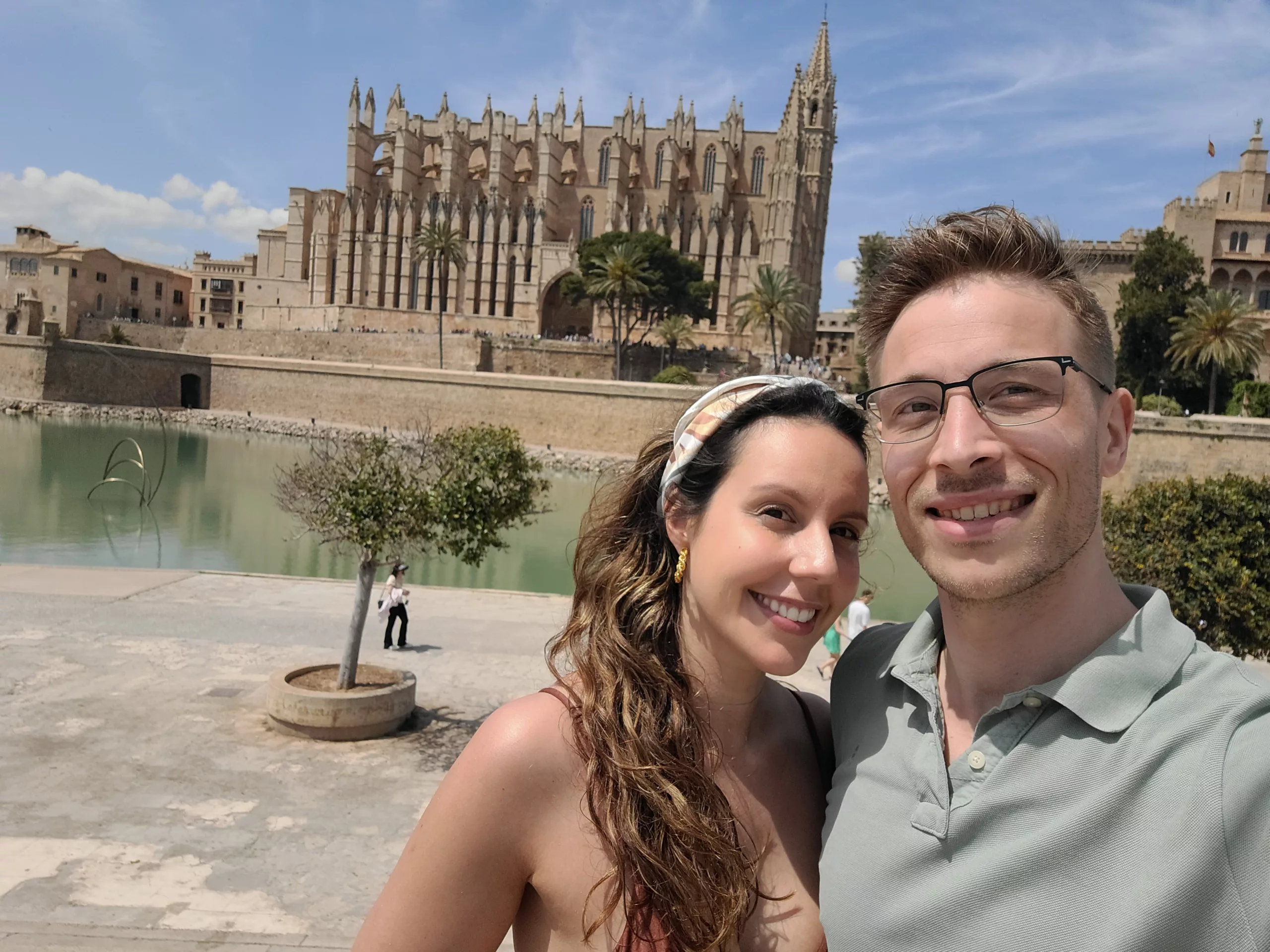
Hi, we’re Timon & Filipa!
We travel across Spain in our motorhome, Speedy, and update TravelSpain24 with fresh content, practical tips, and personal stories from the road. Our goal is to help you experience Spain beyond the typical tourist trails.
11 Ways to Order and Enjoy Coffee in Spain:
Let’s discover Spain’s 11 popular and flavorful coffees! From bold Café Solo to a creamy Café con Leche and tongue-fiery Carajillo, you will surely find your match.
1. Café Solo
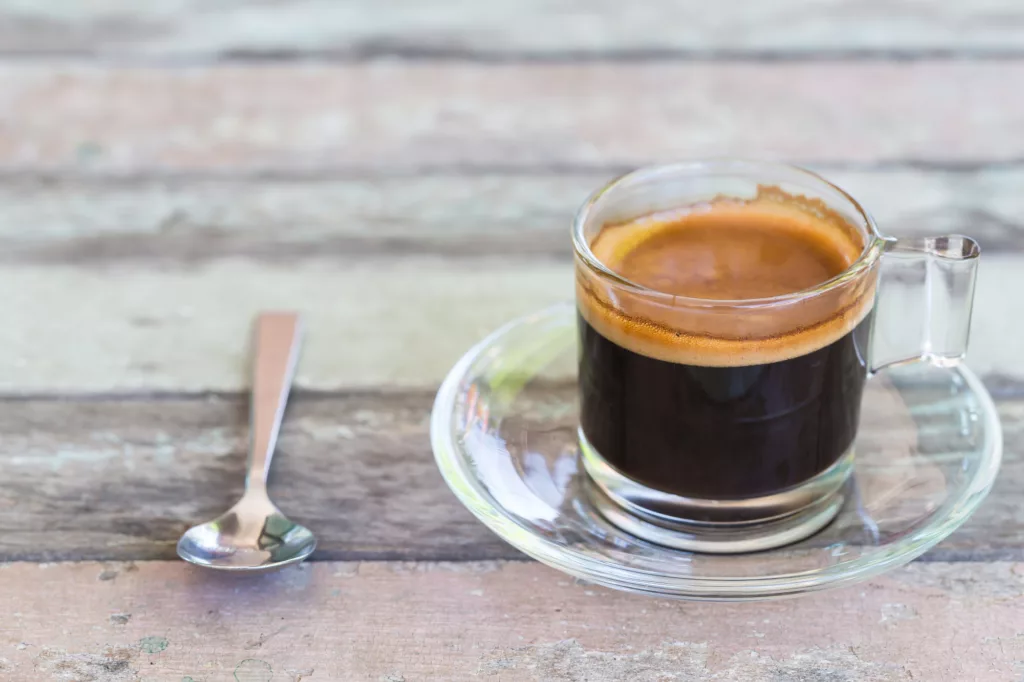
If you find yourself in the charming lands of Spain, or any other Spanish-speaking country, just approach the barista and say: “Me gustaría un Café Solo, por favor”, and a single shot of zesty, strong black coffee appears on your table.
Cafe Solo is made of dark roasted coffee beans, like Arabica and Robusta. Arabica beans are known for their smoother and slightly sweeter flavor, while Robusta beans are known for their strong, earthy taste and higher caffeine content. However, the bean types can vary from region to region or personal preferences. Also, the blend of these beans and preparation methods can impact the overall taste of it.
Café Solo typically consists of one shot of espresso, and it does not traditionally include milk. Brewed to be strong and intense, equivalent to the Italian espresso, but enjoyed Spanish style.
It has a slight bitterness that complements the strong coffee flavor just right. Its full-bodied and rich aromatic fragrance makes Café Solo one of the top favorites for coffee enthusiasts.
2. Café con Leche
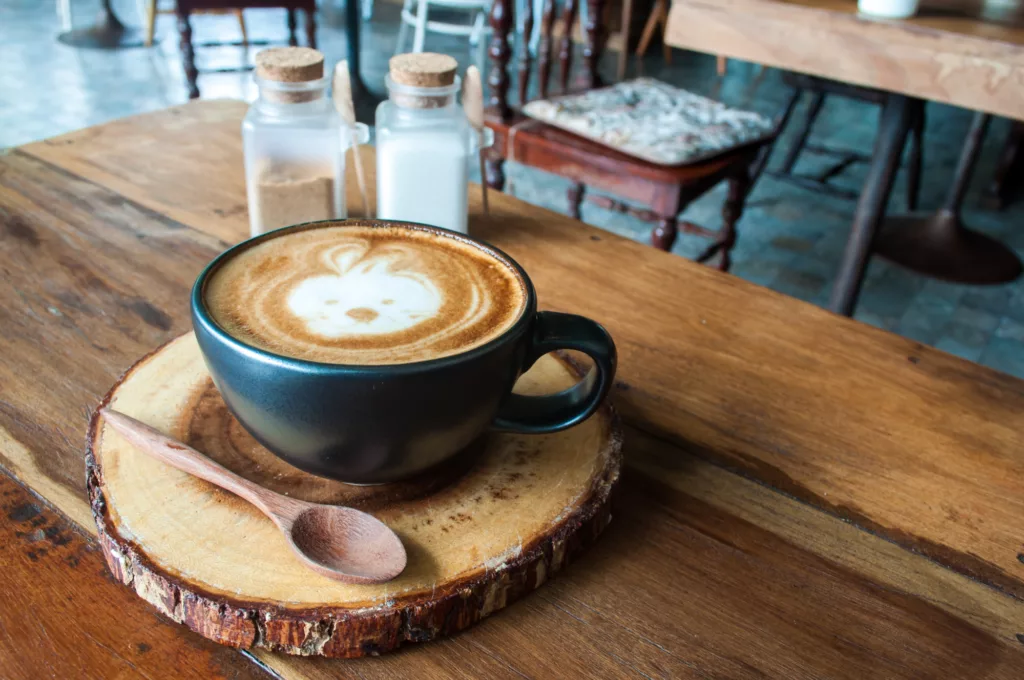
Café con Leche is one of the most popular hot drinks in Spain. It’s a delightful fifty-fifty blend of milk and bold coffee served in a cup or glass. The milk lends a creamy, gentle sweet touch to the coffee, making it milder than café solo. You can also customize it to your preferences and taste, with a hint of sugar, foam on top, extra milk, or coffee to perk it up.
To enjoy this coffee, say: “Un café con leche, por favor.“ (A coffee with milk, please.) If you are soaking up the sun in Andalucia, try this local way of customization: “Una mijita más de Café/Leche por favor”, which means a little more coffee or milk, please.
Your friendly request and unique Spanish will surely leave a positive impression and smile on their faces.
3. Café Americano

Café Americano is a very popular type of coffee, not only in Spain but in America and Europe, too. It’s brewed with one or two shots of espresso coffee and mixed with around 30 to 60 ml of hot water for each shot of espresso, served in a cup or glass.
This mix makes it smoother, less intense, and more approachable choice for those who may find straight espresso too strong but still want to retain the richness and aroma of the shots.
Cafe Americano is typically served black, but you can add milk, sweeteners or any extras you can think of, according to your taste. To ask for an Americano (with milk) in Spanish, you can say: Quiero un Americano (con leche), por favor.
While trying Spanish is fun and appreciated, if you’re not feeling too confident about it, using basic English in Spain is perfectly fine. They will understand! Still, practice makes perfect.
4. Café Cortado
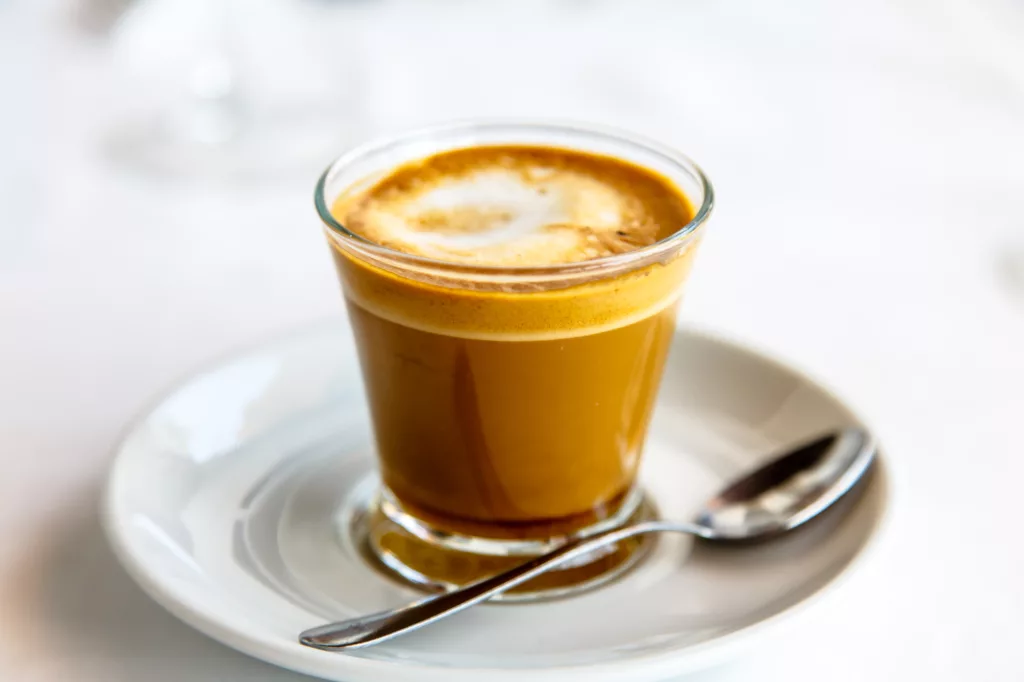
The Spanish term “Café Cortado” literally means “cut coffee” or “short coffee” in English. This coffee style is made of 75% coffee and 25% warm milk, so less than Cafe con Leche. It is prepared by diluting an espresso shot with a small amount of warm milk to reduce the coffee’s acidity and bitterness without losing too much coffee flavor and intensity.
Normally Cafe Cortado is enjoyed at midday or afternoon by students, tourists, or those looking for a more intense caffeine kick. It’s often served along with a small glass of water or tap water.
Tap water is safe to drink in most parts of Spain. Some exceptions may be worth checking, including in more remote, rural areas in the Spanish countryside.
5. Café con Hielo
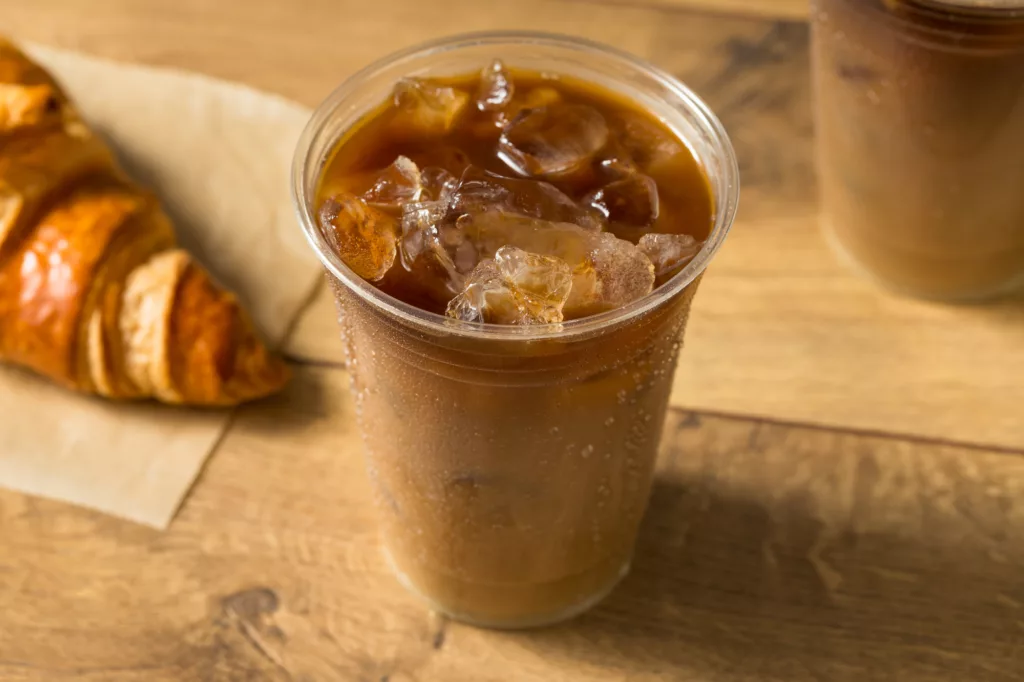
This refreshing iced coffee can be the optimal choice for hot days or while you are in countries with warmer climates, just like Spain. The coffee can be brewed hot or cold and served over ice along with cold milk or milk alternatives. Serving the ice in a separate glass in Spain is also common. That allows you to control the amount of ice you want in your coffee.
I find this very convenient, as many countries put extreme loads of ice, reducing the quantity of coffee you get. So just ask if you can order some iced coffee in Spanish: ¿Puedo pedir un café con hielo, por favor?
Don’t forget, the best way to learn Spanish is to speak and practice it.
6. Café Bombón
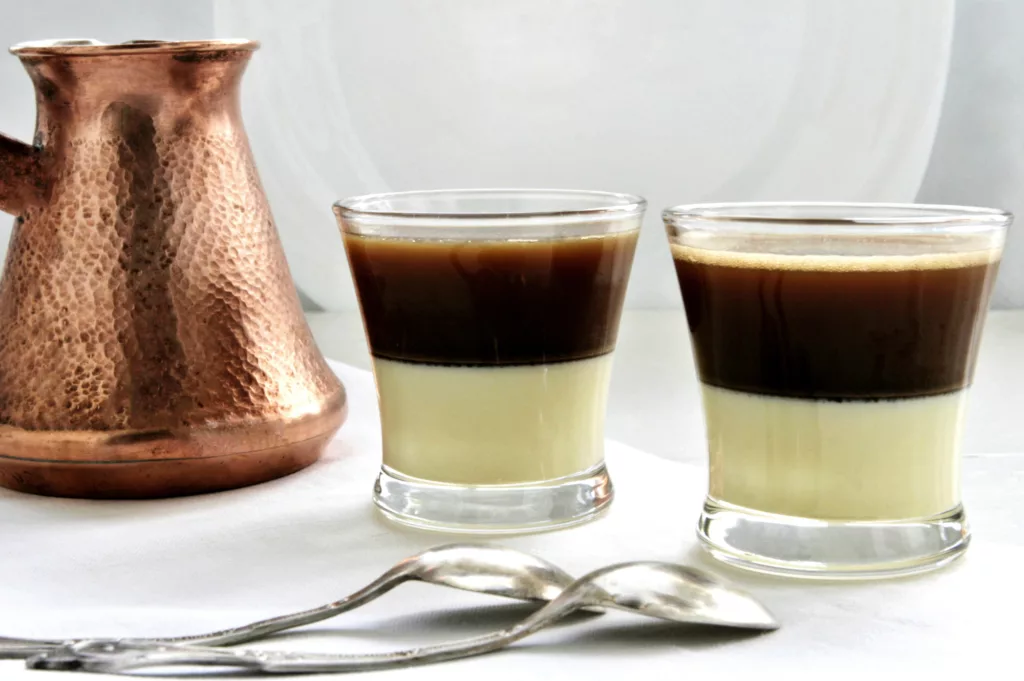
This magical coffee creation originates from Valencia, Spain. No surprise, people enjoy sipping it in Valencia’s rooftop bars with a view. It has also crossed borders, reaching other Spanish-speaking countries like Latin America.
The sweet coffee variant is made by combining a shot of espresso with an equal amount of condensed milk. This gives it a dessert-like sweet taste and a thick, creamy texture.
Its intense sweetness is perfect to satisfy your sugar cravings, especially if you have a sweet tooth. It’s also suitable as a post-lunch treat, much like a dessert, but with a caffeine boost.
7. Carajillo
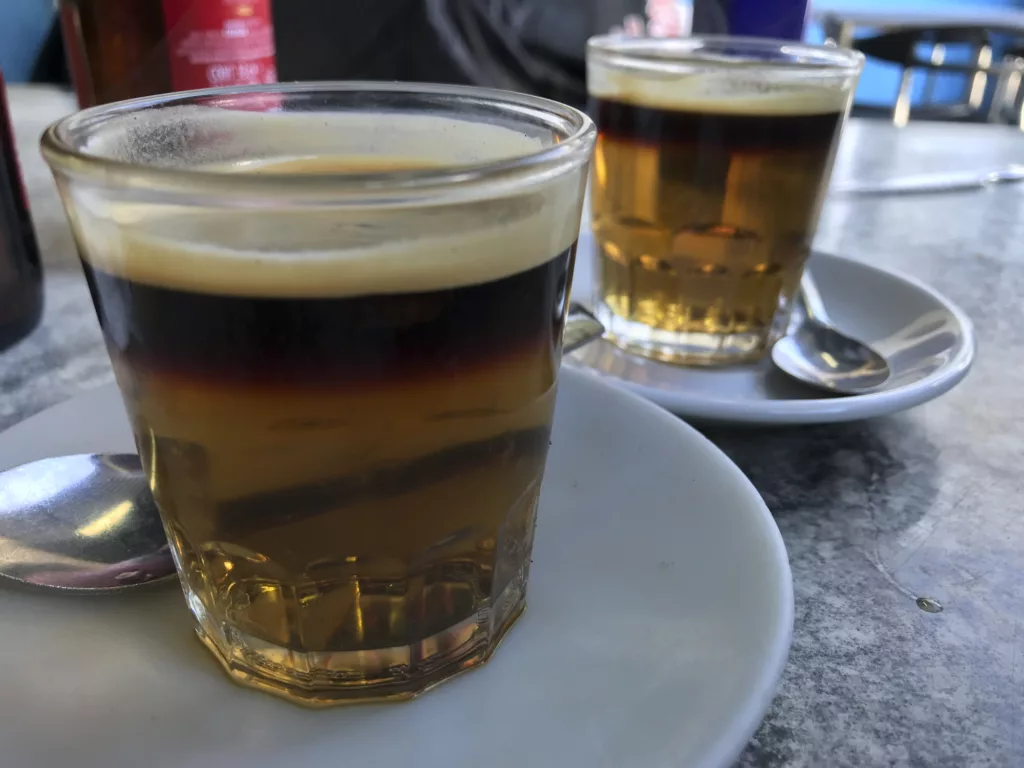
During the 19th century, when Spain was under colonial rule in Cuba, the Spanish stationary soldiers would mix their coffee with rum, believing in giving them ‘coraje’ (courage in English). So the name Carajillo derives from the Spanish word coraje with a bit of change. While I can’t promise it will give you courage, I can promise it will spread fire on your tongue.
A typical Spanish recipe involves combining two shots of espresso with one shot of brandy. First, they heat the alcohol with some added coffee beans, lemon rind, sugar, and optionally a cinnamon stick. After a fiery dance, it’s mixed with the coffee, creating a bold, aromatic brew served piping hot. In Catalonia, it is prepared in a much simpler way, with a shot of brandy, coffee, and some sugar on the side.
Carajillo can be made with different types of liquor, like rum or brandy, depending on personal preference. However, Licor 43 from Cartagena remains the top pick among Spaniards. This way of drinking coffee in Spain is considered to be digestive and is typically consumed post-dinner or after a meal. But there are no golden rules when you can drink it!
Be mindful of the legal drinking age in Spain and the allowance to avoid any legal cases. This coffee is truly fierce!
8. Leche Manchada
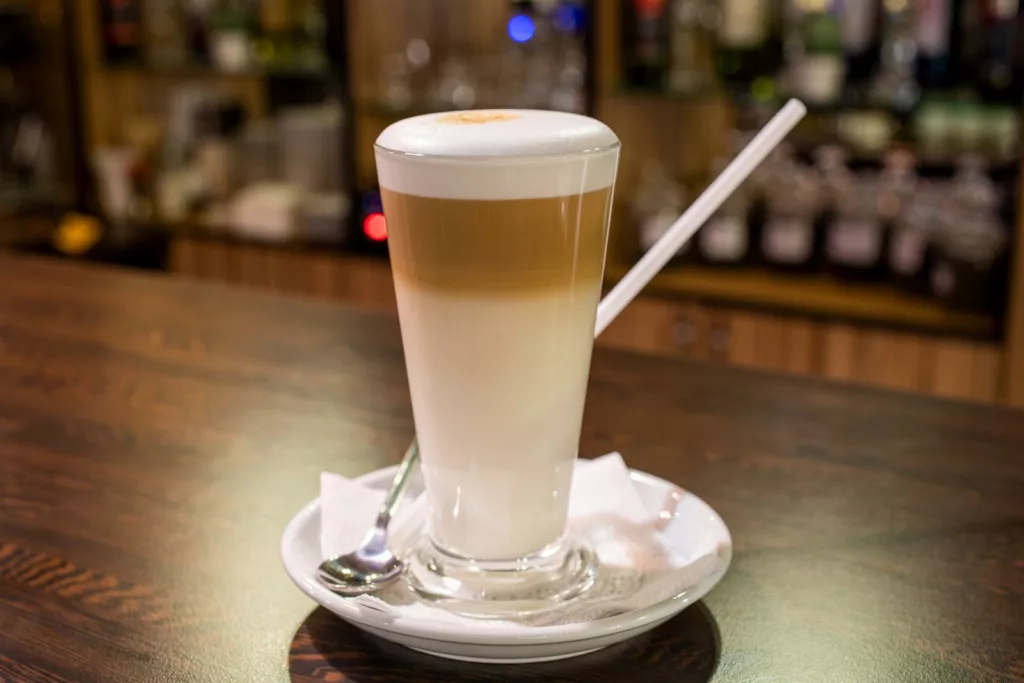
Leche Manchada translates to stained milk. It may sound playful, but it perfectly represents what this coffee is about. It consists primarily of warm milk (75%) with a splash of coffee (25%), which gives it a mild taste and light color like stained milk would have. Of course, you can freely adjust the quantities to your taste, but that might make it a different type, like Cortado.
This gentle coffee style is more prevalent in the Southern region of Spain. Opt for it if you like to rinse your dinner with a hot brew and want a merciful stimulus on your brain and nervous system, so you can still have your beauty sleep. Although, it can make a good addition to any meal for diluted coffee lovers.
9. Café Descafeinado
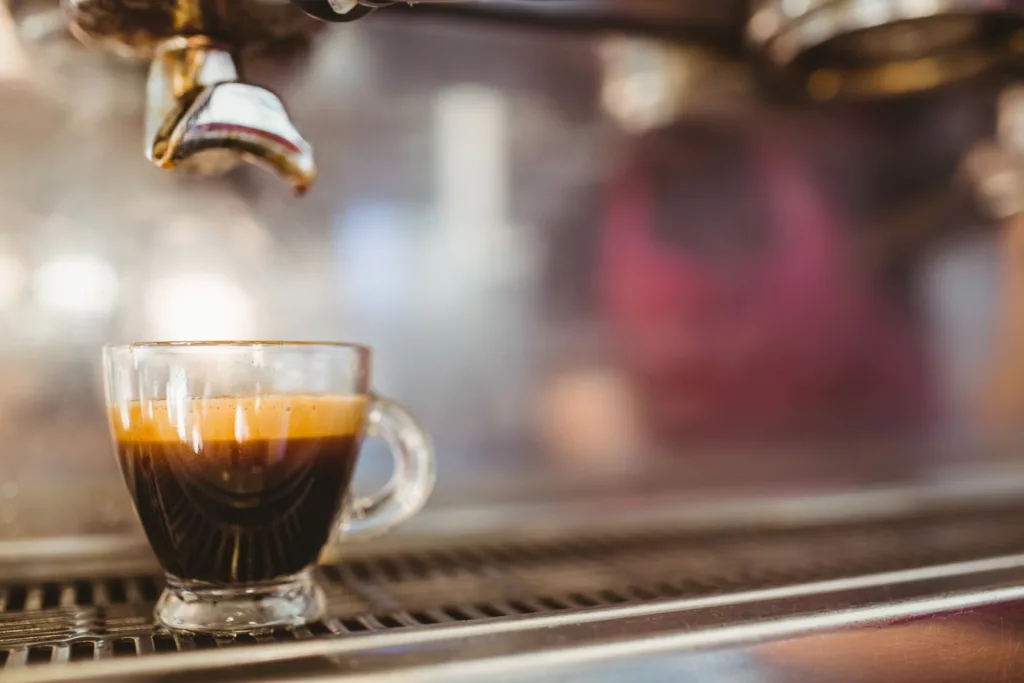
While Spain has a rich coffee culture centered around regular coffee, decaf options are also available to cater to diverse needs and preferences.
These may include those who are sensitive to caffeine or need to limit it due to any health conditions or medications. It may also be a preferred choice for pregnant women or people who want to ensure it doesn’t interfere with their sleep. It can add some variety to your coffee choices, too.
All coffees that make our list here can be easily prepared decaffeinated. Make your pick, and add decaf to your choice when ordering, for example: “Me gustaría un café con leche descafeinado, por favor.” I would like a decaf coffee with milk, please.
10. Trifásico
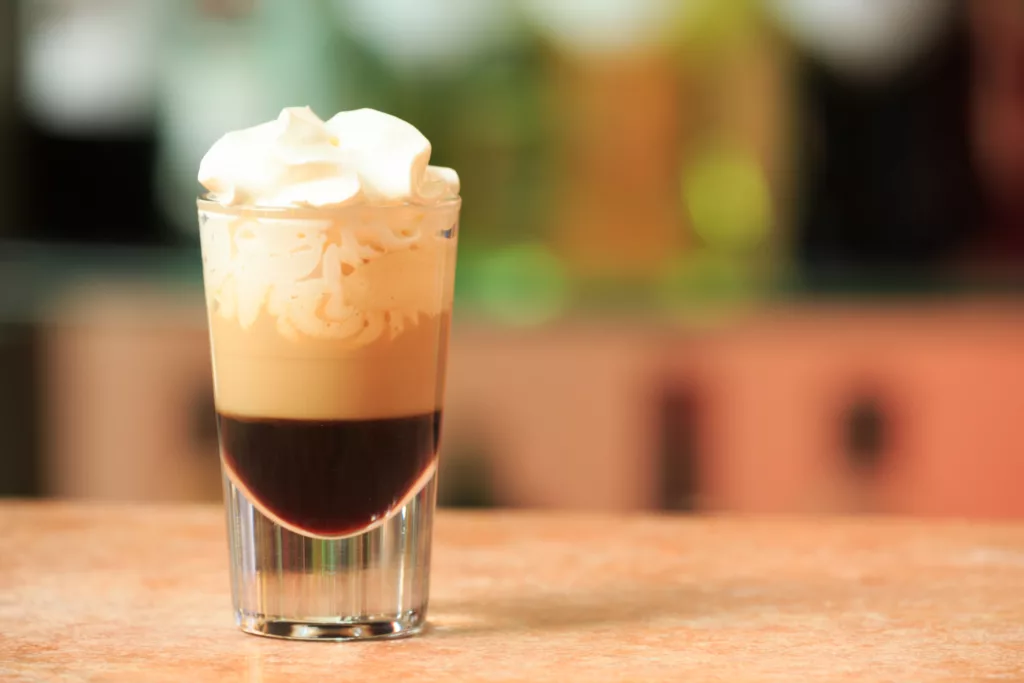
Trifasico is a three-layered coffee variant of Carajillo made with milk, an espresso shot, and liqueur.
It originates from Catalonia and is typically consumed in Barcelona and Valencia. Of course, other parts of Spain and Spanish-speaking countries appreciate its creamy experience with a bit of booze, too.
For example, in Mexico, it is commonly prepared with condensed milk instead of milk as a sweeter version and a punch of secret: the tequila. In Spain, whiskey, rum, cognac, or other liqueurs are used to spice this hot or cold drink up with a unique citrus flavor and a hint of vanilla (Licor 43).
Go Spanish mode and enjoy it after a meal as a digestif or as a special treat on occasions when you want to indulge in a richer, more desert-like beverage. The choices are limitless.
11. Café con Miel
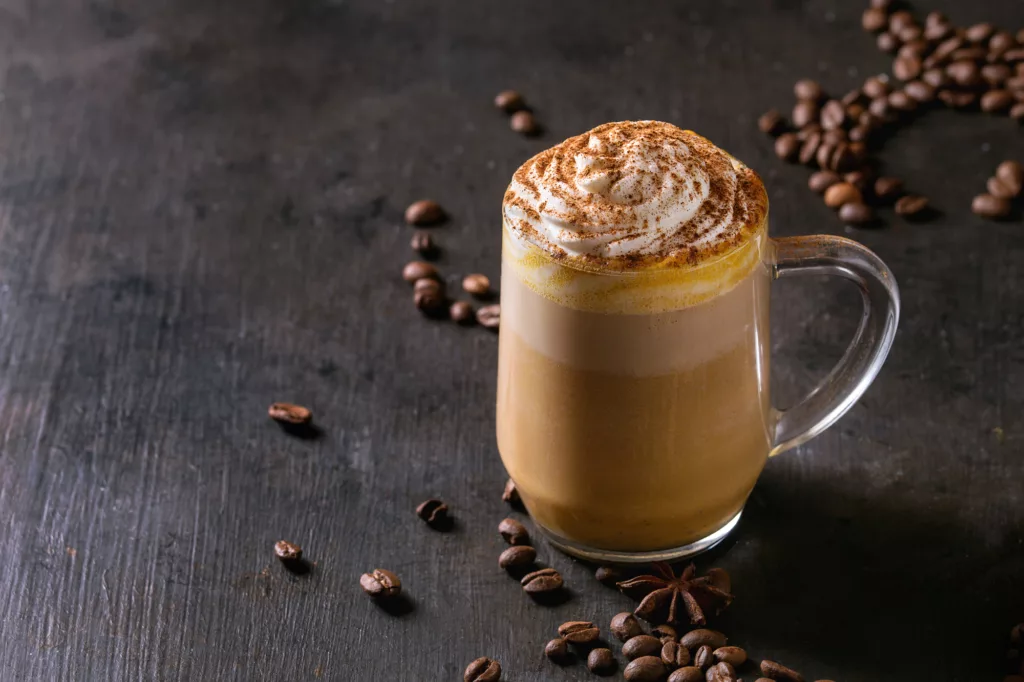
The blissful marriage of freshly brewed coffee and spices like vanilla, nutmeg, cinnamon, whole milk, and honey really gives us that honeymoon feeling. So if you haven’t yet had yours, have a sip and let your imagination fly.
This flavorful Spanish magic is traditionally enjoyed after meals as an afternoon pick-me-up drink or as a favorite winter warmer amongst Spaniards. It is also a healthier and more natural alternative for those with a sweet tooth, trying to avoid refined sugar.
Gently warm up the milk, and dissolve some honey in it. Add spices to the milk-honey mixture, then pour in the shot of espresso. Serve with some cinnamon on top, and enjoy!
A Glimpse into Spain’s Coffee Culture
In Spain, coffee is more than a simple beverage. It’s a cherished tradition that brings people together and dictates the rhythm of everyday life. Locals often go to their cozy neighborhood cafe shop to fill the air with lively conversations while sipping their favorite brew. This shared experience highlights the importance of community.
The history of coffee dates back to the 18th century, precisely around 1720. That’s when Pedro Antonio de Alarcon—a naval officer from the province of Andalucia—traveled to the Middle East and brought back coffee beans to the Spanish lands.
Throughout centuries it has evolved into a phenomenon as we know it today, offering a wide range of choices, like our robust café solo or creamy café con leche. Regional twists, like a shot of brandy, rum, or condensed milk, infuse unique flavors into the coffee experience in Valencia and other Spanish cities and areas.
Coffee drinking comes to life during morning rush hours and pivotal moments of the day, such as family meals, conversations, and lunch breaks, as a caffeine fix and pleasure. The post-siesta coffee holds a place in culture, too. It’s a valued tradition that shows their love for breaks and savoring relaxed moments.
How to Speak Coffee in Spanish
Now that we know all about these delicious coffees in Spain, let’s expand our Spanish-related vocabulary to make your coffee ordering experience smoother, easier, and more enjoyable. And, of course, with all these amazing options, let’s make sure we get exactly what we’re craving!
This might mean you have to adjust the coffee to your taste and preferences, so here is a simple way of doing it:
“Me gustaría un café con leche grande caliente,” which translates in English to: “I would like a large, hot coffee with milk.”
Choose the coffee you like and add any specifics, like:
Coffee size:
Small = Pequēno
Medium = Mediano
Large = Grande
Hot or Cold:
Hot = Caliente
Cold = Frio
With / Without = Con/ Sin
Cream = Crema
Sugar = Azucar
Brown Sugar = Azúcar moreno
Sweetner = Edulcorante
Other helpful words:
Napkins = Servilleta
Spoon = Cuchara
To take away = Para llevar
How much does it cost? = ¿Cuánto cuesta?
The bill please = La cuenta por favor
Coffee Accompaniments in Spain
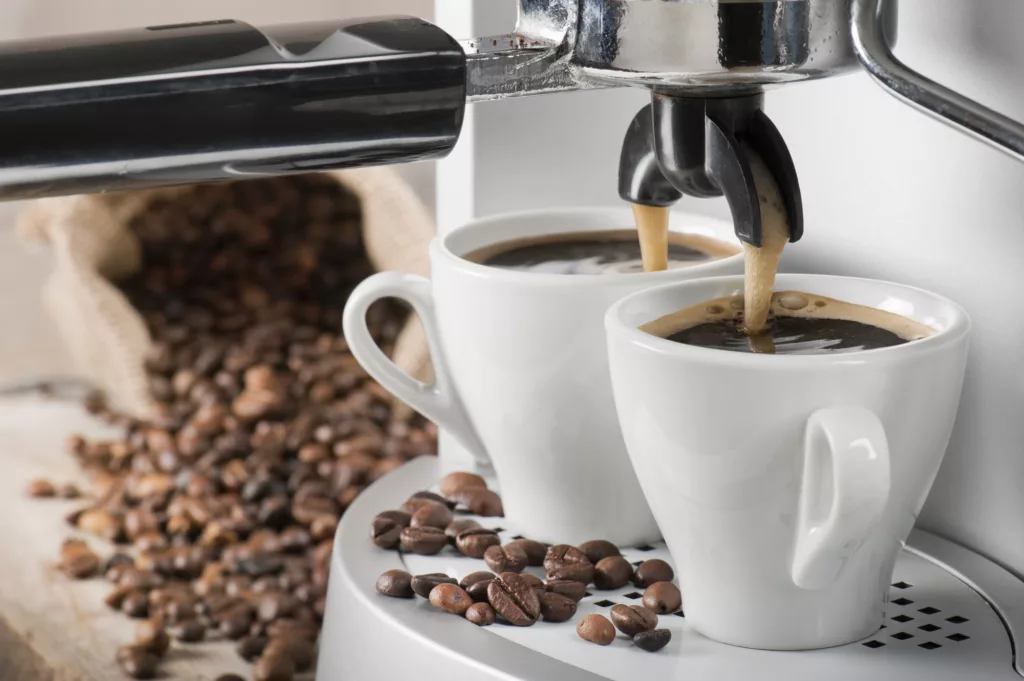
In Spain, enjoying coffee with treats or food often goes hand-in-hand. It’s a Spanish food fact. However, the choices may vary depending on which part of Spain you visit.
One type of food Spaniards accompany their coffee with all around Spain is Churros. This deep-fried dough pastry is enjoyed in the morning or as an anytime snack, sometimes with chocolate dip on the side. Ensaimadas, a sweet bread pastry originating from Mallorca, is often paired with a steaming cup of coffee, too.
Cream-filled croissants may make the table along with tostadas, a savory treat consisting of toasted bread topped with olive oil and tomato, and sometimes Jamon (ham). Ham and cheese stuffed baguette is a savory delight served in restaurants and coffee shops, too. If you are up for a more alone time, you can pick up these ingredients from your local Spanish grocery stores and bring the authentic flavors of Spain right into your own kitchen.
These sweet and savory indulgences enhance the coffee experience by creating a blend of flavors that tickle your taste buds. They perfectly capture Spain’s love for relishing food and drinks in a setting where eating and drinking become affairs.
Whether you find yourself in a city center, a tranquil countryside, or a town in Spain, you’ll discover both cafes and charming vintage coffee houses coexisting side-by-side. Each catered to preferences while remaining rooted in tradition.
This combination of values and contemporary elements highlights a coffee culture that is constantly growing and changing.
Search the site
Popular Destinations
Just letting you know
When you buy something through our links, we’ll earn a small commission—don’t worry, it won’t cost you any extra! It’s a win-win, right?
Exclusive Heymondo Travel Insurance Offer
Planning a trip? Make sure you’re covered! We’ve teamed up with Heymondo to give our readers a special deal: 5% off travel insurance. Grab this deal and know you’re looked after on your next trip.


